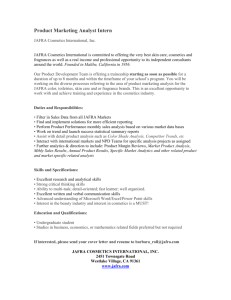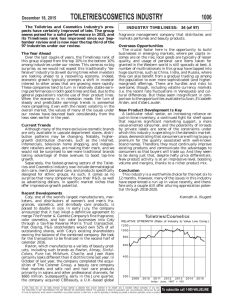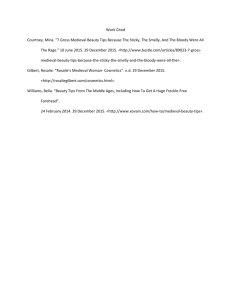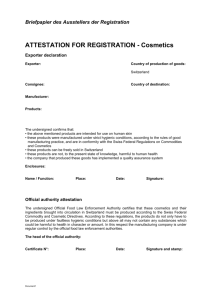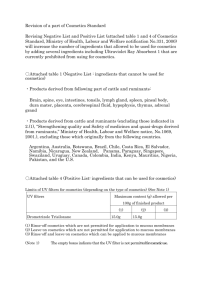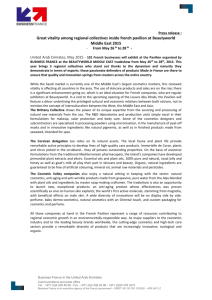Activity Animal Testing Key Learning Students will explore ethical
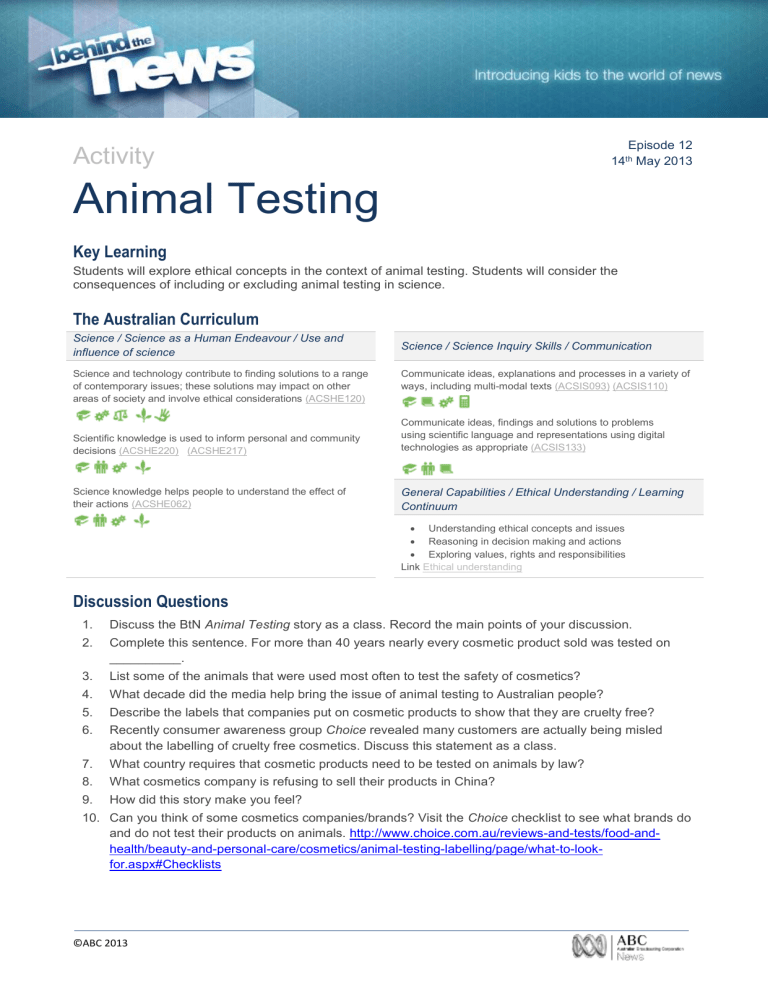
Activity
Episode 12
14 th May 2013
Animal Testing
Key Learning
Students will explore ethical concepts in the context of animal testing. Students will consider the consequences of including or excluding animal testing in science.
The Australian Curriculum
Science / Science as a Human Endeavour / Use and influence of science
Science / Science Inquiry Skills / Communication
Science and technology contribute to finding solutions to a range of contemporary issues; these solutions may impact on other areas of society and involve ethical considerations (ACSHE120)
Communicate ideas, explanations and processes in a variety of ways, including multi-modal texts (ACSIS093) (ACSIS110)
Scientific knowledge is used to inform personal and community decisions (ACSHE220) (ACSHE217)
Communicate ideas, findings and solutions to problems using scientific language and representations using digital technologies as appropriate (ACSIS133)
Science knowledge helps people to understand the effect of their actions (ACSHE062)
General Capabilities / Ethical Understanding / Learning
Continuum
Understanding ethical concepts and issues
Reasoning in decision making and actions
Exploring values, rights and responsibilities
Link Ethical understanding
Discussion Questions
1. Discuss the BtN Animal Testing story as a class. Record the main points of your discussion.
2. Complete this sentence. For more than 40 years nearly every cosmetic product sold was tested on
__________.
3. List some of the animals that were used most often to test the safety of cosmetics?
4. What decade did the media help bring the issue of animal testing to Australian people?
5. Describe the labels that companies put on cosmetic products to show that they are cruelty free?
6. Recently consumer awareness group Choice revealed many customers are actually being misled about the labelling of cruelty free cosmetics. Discuss this statement as a class.
7. What country requires that cosmetic products need to be tested on animals by law?
8. What cosmetics company is refusing to sell their products in China?
9. How did this story make you feel?
10. Can you think of some cosmetics companies/brands? Visit the Choice checklist to see what brands do and do not test their products on animals. http://www.choice.com.au/reviews-and-tests/food-andhealth/beauty-and-personal-care/cosmetics/animal-testing-labelling/page/what-to-lookfor.aspx#Checklists
©ABC 2013
Activities
K-W-H-L
After watching the BtN Animal Testing story invite students to participate in a class discussion. Find out what your students know about animal testing, what they learnt from the story and what questions they have about the topic. Here are some discussion starters:
Discussion questions
What was surprising about this story?
What rights do you think animals should have?
What are the pros and cons for animal testing? Create a plus and minus chart.
What do you know?
What do you want to find out?
How will you find out?
What did you learn?
Conduct your own research
As a class look at the Choice checklist of cosmetics companies/brands that do and do not test their products on animals. Ask students what they found surprising about the checklist. Visit some familiar brand ’s websites to find out if their products are certified as having not been tested on animals. http://www.choice.com.au/reviews-and-tests/food-andhealth/beauty-and-personal-care/cosmetics/animal-testinglabelling/page/what-to-look-for.aspx#Checklists
Generate a class discussion to further explore ethical concepts in the context of animal testing. Ask students to consider the consequences of including or excluding animal testing in science.
Discussion questions
What do you think about testing things like nail polish and shampoo on animals?
Is it ok to use animals to test medicines? Why or why not?
What do you think should happen next?
©ABC 2013
Mini debate
Before preparing for the mini-debate, students will identify the ethical and moral issues related to animal testing. Choose a statement to use for your mini-debate.
Consider creating a SWOT chart
Strengths Weaknesses
Opportunities Threats
Preparing for your mini debate
Working in pairs, students will prepare a 1-2 minute speech for a mini debate on the topic of animal rights. One person will speak for the affirmative and the other will speak for the negative.
Before students begin to construct their argument, ask them to record what they already know about the topic and what they would like to find out. Students then research the topic to gain a greater understanding of the issue.
Ask students to list their arguments in point form on paper (without their partner seeing them). When they have done this, ask them to choose the five best points that will form the basis for their debate.
Students will write in point form, their debate on cards that fit into the palm of their hand. Their debate needs to have an introduction (introducing the topic), middle (three main points) and a conclusion
(restating their position). Students practise their speech and then present the mini debate to other students.
Guide for giving feedback
Was the information clear and accurate?
Were the arguments logical?
Were the counter arguments accurate and relevant?
Comments about the presentation style
(tone of voice, body language, enthusiastic, convincing).
Reflection
How difficult was it to think of points to support one side of the argument?
Do you think you would have done a better job supporting the other side of the argument?
Was I able to convince others of my opinion?
Did my opinion change?
What did you learn from this activity?
©ABC 2013
Related Research Links
ABC News – Consumers ‘being misled’ over cruelty free cosmetics http://www.abc.net.au/news/2013-05-05/claims-consumers-being-misled-over-cosmetics/4669122
CBBC – Why does animal testing happen? http://www.bbc.co.uk/newsround/14419657
RSPCA – Are animals used for cosmetics testing in Australia? http://kb.rspca.org.au/Are-animals-used-for-cosmetics-testing-in-Australia_399.html
PeTA – All About Animals: Animal Testing http://www.allaboutanimals.org.uk/SP-Testing.asp
Choice – Checklist of brands that do and do not test on animals http://www.choice.com.au/reviews-and-tests/food-and-health/beauty-and-personal-care/cosmetics/animaltesting-labelling/page/what-to-look-for.aspx#Checklists
Behind the News – Animal Rights http://www.abc.net.au/btn/story/s2661724.htm
©ABC 2013
